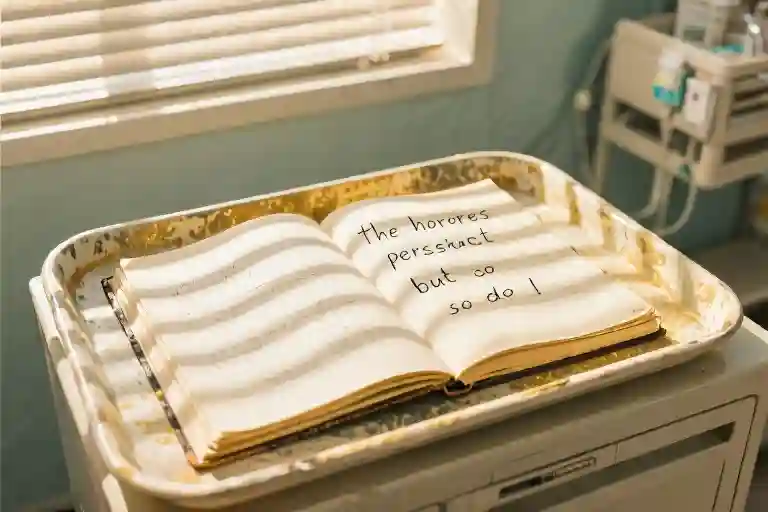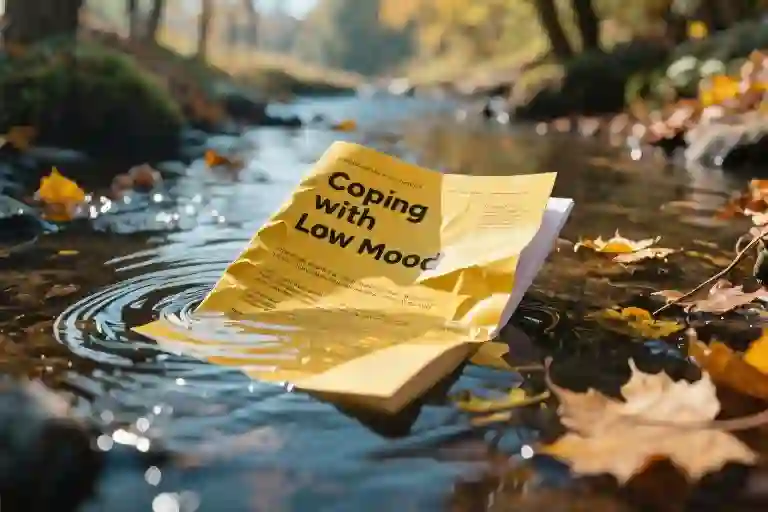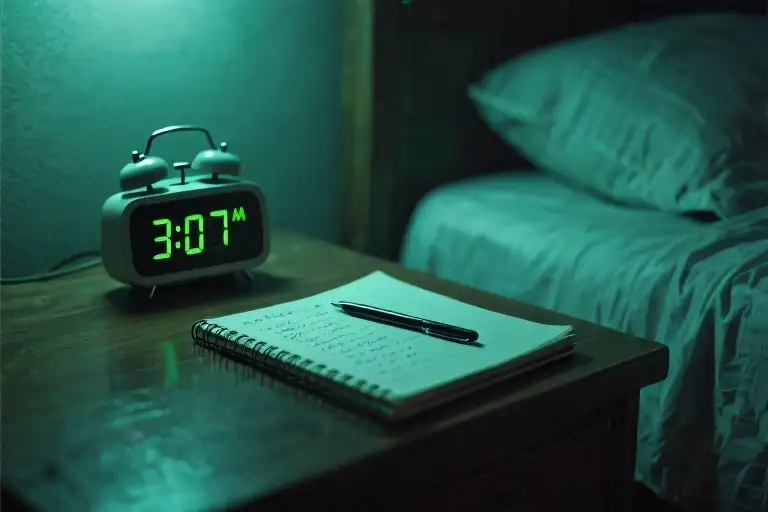The notebook lay open on the hospital tray table, its pages filled with shaky handwriting. Between notes about blood cell counts and medication schedules, a single phrase appeared in bold letters at the top of each entry: the horrors persist but so do I. Sarah, a 34-year-old graphic designer undergoing chemotherapy, had adopted this mantra not as denial of her illness, but as a way to acknowledge both the brutality of treatment and her own stubborn presence through it all.
Global health data reveals Sarah is far from alone in this daily negotiation with persistent adversity. According to WHO reports, nearly 70% of adults experience prolonged psychological distress from chronic health conditions, financial instability, or systemic inequalities. These aren’t temporary storms to weather, but ongoing climates we must learn to inhabit. The central question emerges not about avoiding struggle, but discovering how to remain intact within it.
What makes this particular phrase resonate across such diverse hardships? Its power lies in the dual recognition it demands – seeing clearly the horrors without losing sight of the enduring I. Unlike simplistic positivity that glosses over suffering, this statement creates space for two truths to coexist: the reality of persistent challenges, and the equally real capacity to meet them.
The notebook’s pages show this balance in practice. Some entries detail the visceral horrors – the metallic taste of fear before scans, the humiliation of losing hair, the isolation of compromised immunity. Others document small victories of the persisting I – managing to eat half a meal, laughing at a dark joke, noticing spring buds from the hospital window. Neither truth cancels the other; together they form a complete picture of resilience.
This interplay mirrors findings in trauma psychology, where studies show that individuals who acknowledge suffering while maintaining self-awareness demonstrate greater long-term adaptability. The phrase operates as a linguistic microcosm of this psychological principle, packaging profound resilience into six ordinary words. Its simplicity makes it adaptable – scrawled on protest signs, whispered during panic attacks, or typed at the end of exhausting workdays.
Sarah’s story illustrates how the phrase functions not as a magic solution, but as an anchor point. On days when nausea made writing impossible, she’d simply trace the letters with her finger, reaffirming that while cancer’s assaults continued, so did her fundamental self. The horrors persisted in lab results and side effects; she persisted in reading, loving, and occasionally raging against the dying of the light.
This introduction establishes the terrain we’ll explore – how a compact phrase can become a lifeline when life becomes an endurance test. The following sections will unpack its mechanisms, examine its neuroscience, and provide tools for applying its wisdom. But first, we sit with Sarah’s notebook, honoring the raw honesty of its pages – proof that some of our most powerful survival tools fit within a single sentence.
The Weight of Six Words
We rarely pause to consider how much power can be compressed into a handful of syllables. “The horrors persist but so do I” operates with surgical precision—six ordinary words that form an extraordinary lifeline. This isn’t just a phrase; it’s a psychological tool forged in the crucible of human resilience.
The Anatomy of “Horrors”
Collins Dictionary reveals the word’s layered nature:
- Clinical definition: Extreme nervousness or panic (“She woke in the horrors”)
- Moral revulsion: A profound sense of wrong (“the horrors of war”)
- Colloquial dread: That sinking Sunday-night feeling before a difficult week
Yet in daily use, we stretch it further—to chronic pain flare-ups, to workplace microaggressions, to the quiet terror of checking one’s bank balance. What makes this word extraordinary is its elasticity; it molds itself around both monumental tragedies and mundane struggles.
A Literary Bloodline
This phrasing carries echoes of:
- Shakespeare’s Edgar in King Lear: “The worst is not / So long as we can say ‘This is the worst'”
- Holocaust survivor Viktor Frankl: “When we are no longer able to change a situation… we are challenged to change ourselves”
- Modern Twitter poets condensing existential grit into viral threads
The evolution follows a clear arc—from elaborate Elizabethan constructions to today’s tweetable mantras. Our neurological wiring seems to crave this compression; the brain recalls six-word declarations more readily than paragraphs.
Your Turn: Rewrite Your Struggle
Try this exercise with a current challenge:
- Name the persistent “horror” (be brutally specific: the migraines, not just “pain”)
- Claim your continuity (“but I still draft emails between ice packs”)
- Notice the shift—the problem remains, but your position relative to it changes
A marketing executive transformed “Job search rejections pile up” into “The rejections accumulate but so do my skills.” The horror of unemployment didn’t vanish, but her framing created space for agency.
This linguistic alchemy works because it rejects false binaries—it doesn’t demand we choose between acknowledging pain and asserting strength. Most resilience tools fail by forcing that choice; this phrase thrives by holding both truths simultaneously.
The Neuroscience of Persistence
Chronic stress doesn’t just weigh on the mind—it physically reshapes our brains. The hippocampus, that seahorse-shaped region responsible for memory consolidation, actually shrinks under prolonged adversity. Meanwhile, the amygdala, our emotional alarm system, becomes hyperactive. This neural remodeling explains why trauma survivors often experience intrusive memories while struggling to recall ordinary details.
Norwegian researchers studying WWII survivors’ descendants found epigenetic changes persisting across generations. Certain genes regulating stress response showed methylation patterns different from control groups—not as damage, but as adaptation. Their bodies had learned to expect hardship and prepared accordingly. This biological legacy carries both burden and gift: heightened vigilance alongside remarkable endurance.
Three daily practices can strengthen neural resilience:
- Targeted reminiscence: Spend 5 minutes recalling a past challenge you overcame, focusing on sensory details (the smell of rain when you finally left that toxic job, the texture of the sweater you wore during chemo). This lights up hippocampal pathways while keeping amygdala activation manageable.
- Micro-restoration breaks: Every 90 minutes, pause for 30 seconds of deliberate stillness—no meditation apps required. Simply notice three neutral physical sensations (your left sock’s seam, the air moving through your nostrils, the weight of your watch). These brief resets prevent stress accumulation.
- Future self-visualization: Before sleep, imagine your resilient future self handling difficulties with quiet competence. Neuroscience shows this mental rehearsal activates the same neural networks as actual experience, building resilience muscle memory.
What’s extraordinary isn’t that stress changes our brains—it’s that our brains evolved to transform stress into strength. The same neural plasticity that encodes trauma also enables recovery. When we say ‘but so do I,’ we’re acknowledging this biological truth: we are designed to persist, to adapt, to outlast.
From Soliloquy to Battle Cry
That phrase you scribbled on a sticky note and stuck to your bathroom mirror does more than remind you to keep going—it’s a quiet rebellion against the darkness. When “the horrors persist but so do I” transitions from private mantra to public declaration, something remarkable happens: personal resilience becomes collective power.
The Mirror Matrix Method
Start with the physical space you confront daily. Those neon Post-its surrounding your reflection aren’t just affirmations—they’re strategic resistance. Try this three-layer approach:
- Ground Zero: Place the original phrase at eye level where you can’t avoid it during morning routines
- Expansion Pack: Surround it with situation-specific adaptations (“CT scan days persist…”, “layoff rumors persist…”)
- Victory Log: Reserve the bottom corner for dated additions (“May 12: Persisted through panic attack”)
The genius lies in the ritual. Tracing these words with your fingertip while brushing teeth creates muscle memory of resilience. Over time, the mirror becomes less a reflector of fatigue and more a living scrapbook of small triumphs.
Street Poetry Revolution
During Hong Kong’s protests, activists transformed this phrase into visual Morse code. The Mandarin character for “persist” (坚持) appeared spray-painted beside British-style postboxes—a bilingual middle finger to oppression. What makes such adaptations potent isn’t just the message, but the metamorphosis:
- Personal → Portable: Short enough to text when phones might be searched
- Verbal → Visual: Adaptable to quick stencil art or hand gestures
- Statement → Signal: Recognizable to allies without alerting opposition
This evolution follows the three-act structure of all great resistance language: first whispered in bedrooms, then chanted in streets, finally etched into history.
DIY Resistance Toolkit
Your version needn’t wait for a revolution. Download our printable templates to create:
- Wallet Cards: Credit-card sized phrases for quick reassurance
- Zoom Backgrounds: Subtle text borders for virtual solidarity
- Protest Ready: Weatherproof stickers with tear-off tabs to share
The real magic happens when you modify the template’s blank space—that’s where personal context turns universal truth into individual armor. A cancer patient added chemotherapy dates; a teacher filled it with student names; a climate activist inserted disappearing glaciers.
What begins as words on your mirror doesn’t stay there. Like ink spreading through tissue paper, resilience language bleeds beyond its original borders—from your reflection to someone else’s hope, from private doubt to public defiance. The horrors may persist, but so will this: the human compulsion to etch our endurance where others might see it and remember their own.
The Shadow Side of Resilience
We often celebrate persistence as an unqualified virtue, but endurance has its dark corners. That activist you admire for their tireless campaigning? They haven’t slept properly in months. The cancer survivor whose ‘never give up’ story went viral? They privately resent the expectation to perform constant optimism. These aren’t failures of resilience – they’re warnings about what happens when we mistake suffering for strength.
When Persistence Becomes Poison
Take Maya, a 32-year-old climate organizer whose burnout interview went viral last year. ‘I had ‘the horrors persist but so do I’ tattooed on my wrist during my third arrest,’ she recounts. ‘But somewhere along the line, ‘so do I’ became ‘so must I’.’ Her story exposes the dangerous shift from voluntary endurance to compulsory martyrdom that plagues many change-makers.
Psychologists identify four markers of toxic persistence:
- The Cost Blindness Effect: Ignoring physical/emotional depletion signals
- Identity Fusion: When the cause becomes your entire personality
- Relentlessness Bias: Viewing breaks as betrayal rather than biological necessity
- Hope Tax: Feeling obligated to perform optimism for others’ benefit
The Resilience Richter Scale
Developed at Columbia’s Resilience Center, the Healthy Persistence Index helps distinguish between adaptive grit and harmful stubbornness. Try this quick self-assessment:
When facing prolonged challenges, do you…
- [ ] Feel your efforts are expanding your capacity (healthy)
- [ ] Notice your world narrowing to only the struggle (warning)
- [ ] Experience physical symptoms like tension headaches or gut issues (danger)
- [ ] Resent people who aren’t ‘keeping up’ with your intensity (crisis)
The tool isn’t about judging your endurance, but about noticing when the weight you’re carrying starts distorting your posture.
The Art of Strategic Retreat
Paradoxically, true resilience requires knowing when to step back. Here are five scientifically-validated signs it’s time to temporarily disengage:
- The Deja Vu Test: If solutions start looking identical despite failing repeatedly
- The Sunday Night Effect: Dread about continuing outweighs purpose
- The Memory Gap: Forgetting joyful moments unrelated to the struggle
- The Empathy Erosion: Becoming irritated by others’ ‘trivial’ problems
- The Body Bulletin: Persistent symptoms that medical checks can’t explain
As psychologist Dr. Ellen Greene notes: ‘Resilience isn’t a straight line – it’s a dance between engagement and recovery. The most enduring activists, survivors and innovators all master this rhythm.’
This isn’t about abandoning your cause or conceding defeat. It’s about recognizing that sometimes, the most rebellious act is to rest. Because the horrors may persist – but so must your humanity.
The Alchemy of Persistence
We often misunderstand resilience as a form of victory – as if the goal is to emerge unscathed from life’s battles. But the quiet truth hidden in “the horrors persist but so do I” isn’t about vanquishing darkness. It’s about learning to light candles in an endless tunnel.
Coexistence Over Conquest
Modern psychology keeps revealing what ancient wisdom always knew: trauma changes us permanently. Like tea leaves staining porcelain, persistent hardships leave marks that become part of our texture. The revolutionary idea isn’t that we overcome, but that we reconfigure ourselves around what cannot be overcome. Chronic pain patients demonstrate this daily – not by eliminating suffering, but by expanding life around its edges.
Three small acts to practice this alchemy today:
- Future mail: Write an email to yourself six months from now. Describe your current struggle with radical honesty, then add three ways it might unexpectedly strengthen you. Schedule it to send automatically.
- Scar mapping: Literally or metaphorically trace your life’s wounds on paper. Beside each, note one way it reshaped your emotional landscape – like how a forest fire creates space for new growth.
- Micro-retreat: When overwhelmed, set a 90-second timer to simply whisper “and yet” between breaths. This tiny pause builds neural pathways for endurance.
The Persisters’ Pact
Alone, our candles flicker. Together, they become bonfires. That’s why we’re forming The Endurance Collective – a digital campfire where:
- Members share their evolving versions of the phrase (“The migraines persist but so does my photography”)
- We crowdsource survival strategies across different hardships
- No one has to explain their “horrors” – we know explanations drain energy
This isn’t about toxic positivity or performative suffering. It’s about what researcher Brené Brown calls “strong back, soft front” – the courage to stay tender while carrying life’s weight. Your application is simple: show up with one true sentence about what won’t leave you, and what won’t leave you either.
Because the most subversive act isn’t outlasting the horrors. It’s refusing to let them dictate what kind of survivor you become.





